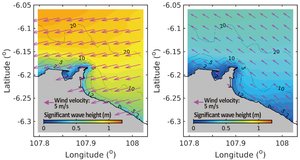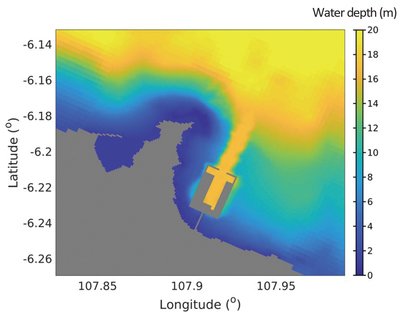Major Research Exploratory Research in FY2020
Development of sediment transport control method to minimize harbor siltation
In a number of ports in Japan and overseas, countermeasures against sedimentation of navigation channels and harbor basins due to sediment discharge from rivers and sediment movement by forcing factors (e.g., tides and waves) are required. As dredging of such navigation channels to keep their necessary depths involve issues of maintenance dredging costs as well as the need to secure sites for disposing of dredged sediments, it is necessary to develop methods for reducing the volume of dredged sediments and maintaining management of such port operations in an efficient manner. While it is important to properly predict the amounts of sedimentation in the channels and basins for planning the future efficient maintenance strategy and designing appropriate sediment control countermeasures, the complex mechanism of sediment transport processes in-situ still provide us with various issues that must be resolved for the application of numerical simulations.
Our present study involves using in-situ bathymetric data to improve the accuracy of our numerical model for prediction of siltation of navigation channels and harbor basins, and the development of a numerical prediction system suitable for simulation of siltation in arbitrary shapes of ports and harbors anywhere in South East Asia and other countries.
As for our FY2020 activities, we analyzed in-situ data and improved our previously developed sand-mud-mixture sediment model so that it can be applied to coastal areas (e.g., Patimban, Indonesia). We also discussed the sediment dynamics including the fluid mud transport in Niigata Port (West Port district) through analysis of the in-situ data on the sedimentary processes.

Simulation reproducing wave fields off the Patimban coast

Topographical data representation of the sea zone by Patimban Port after its construction



